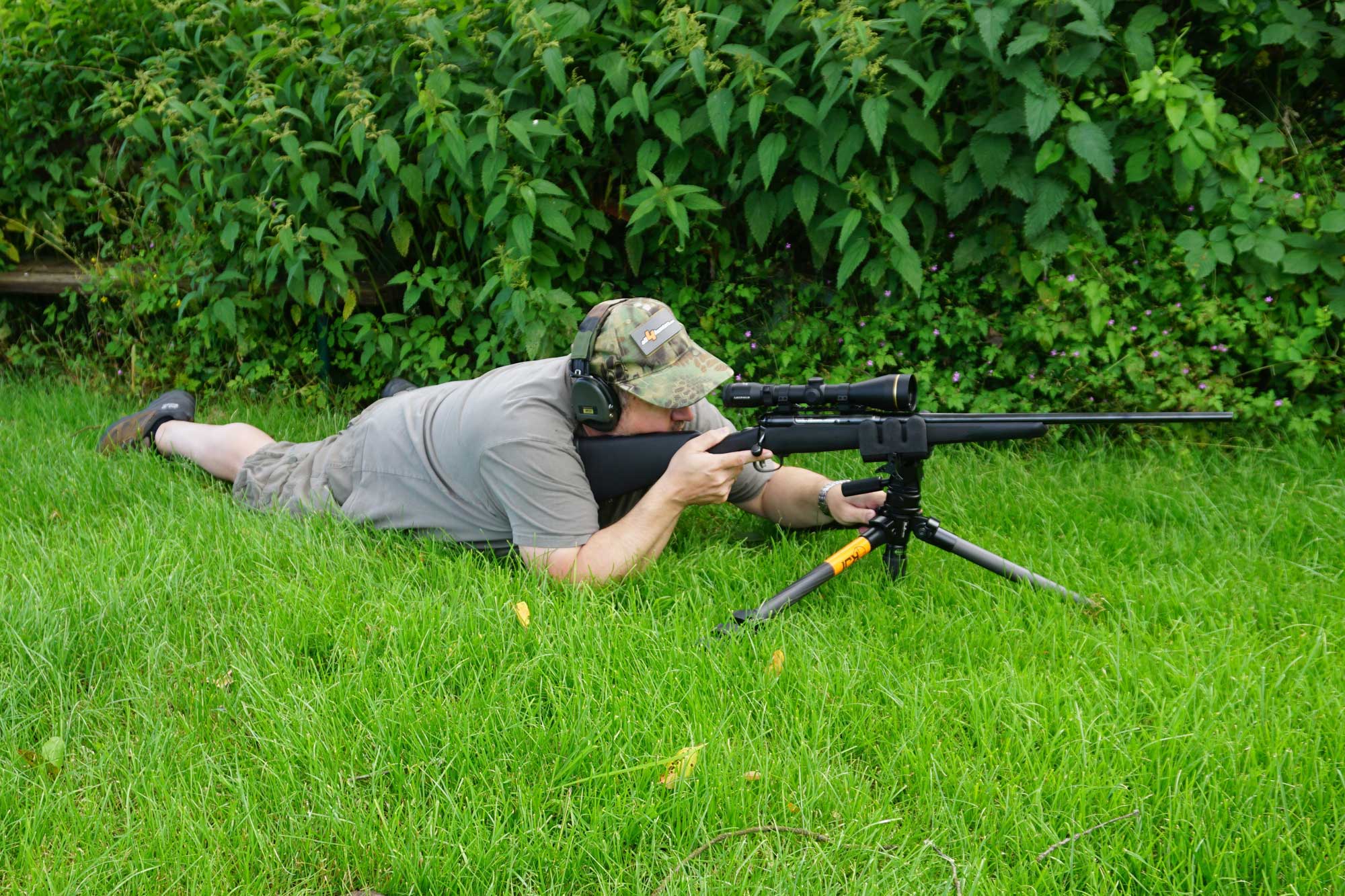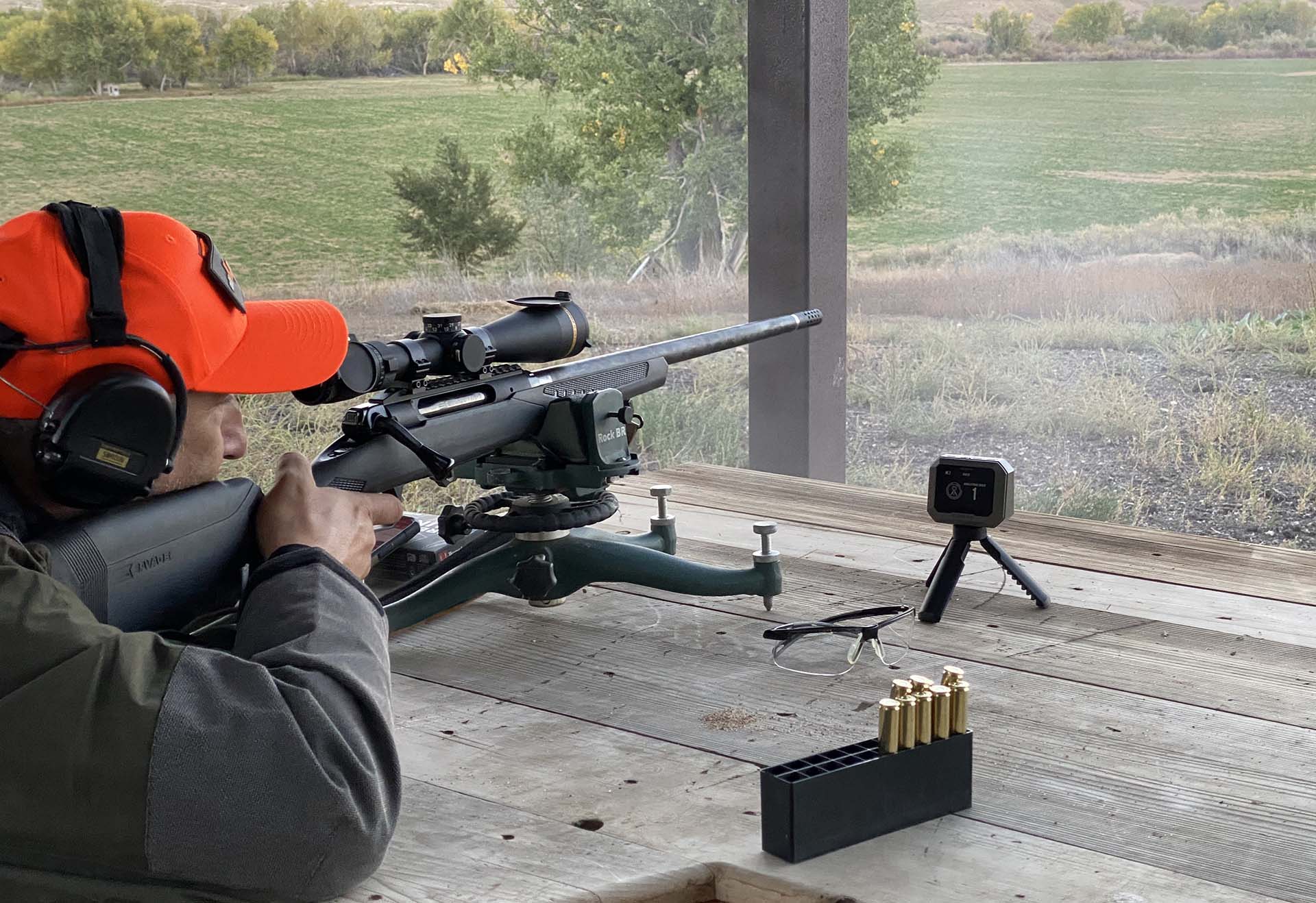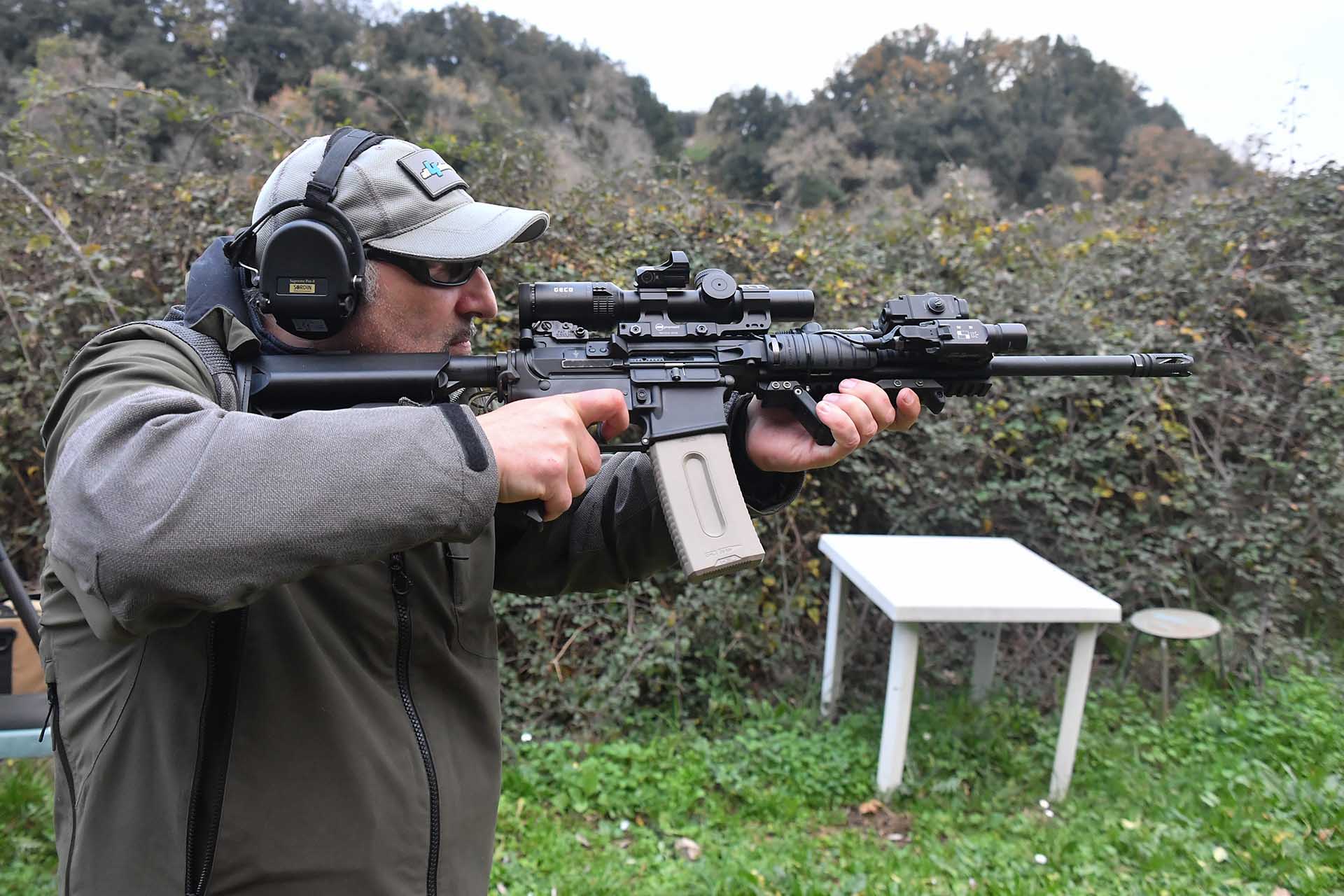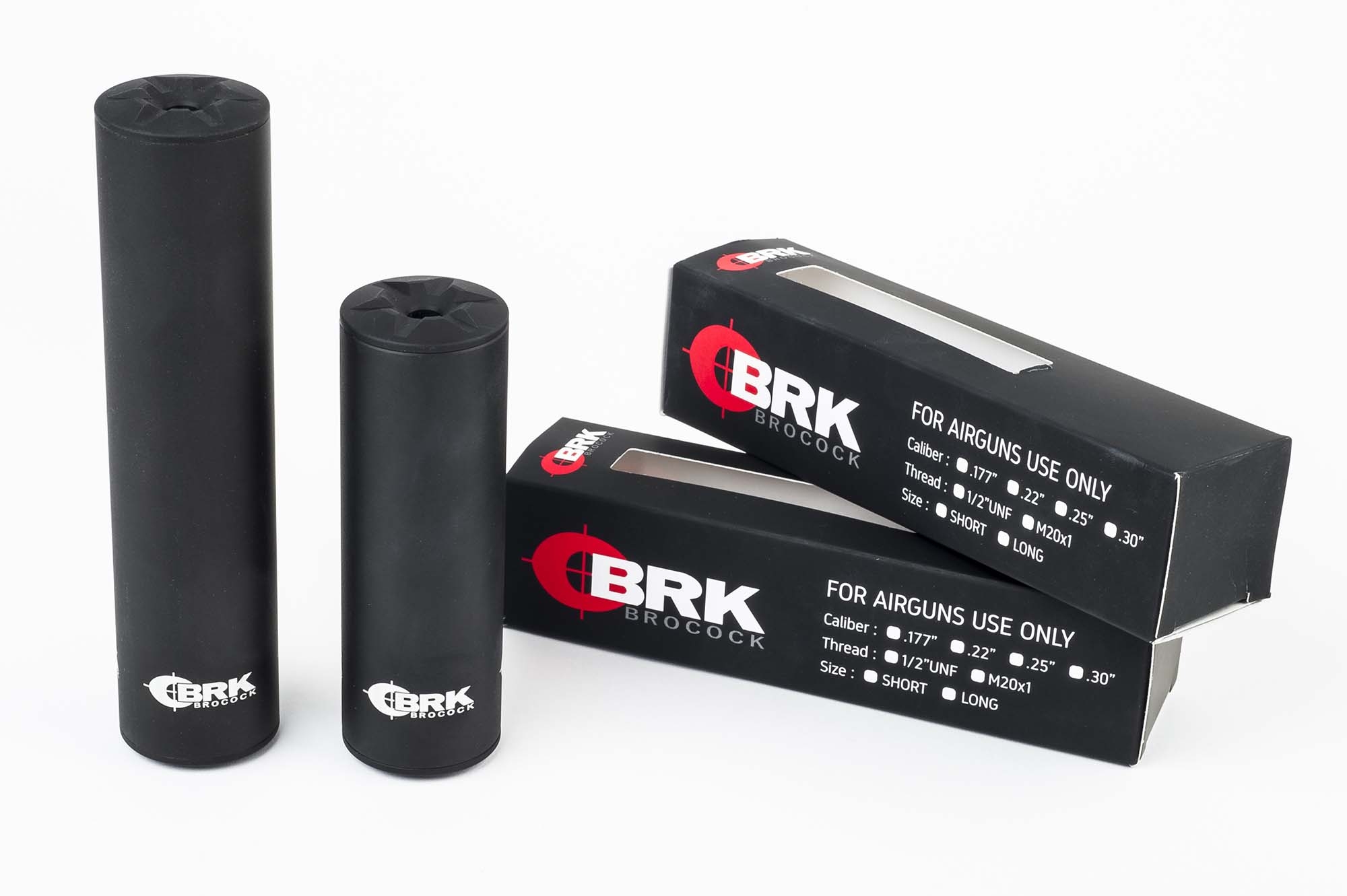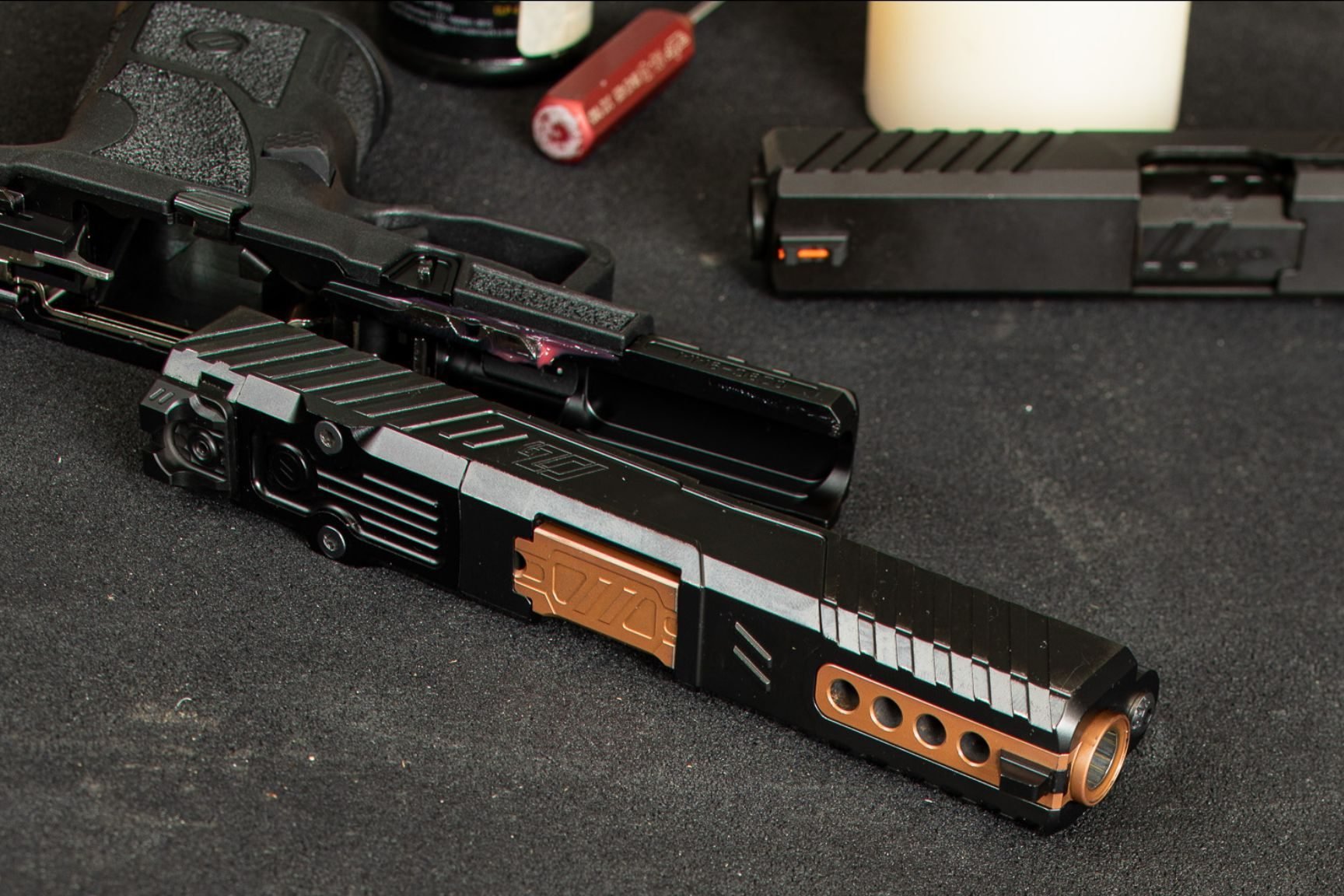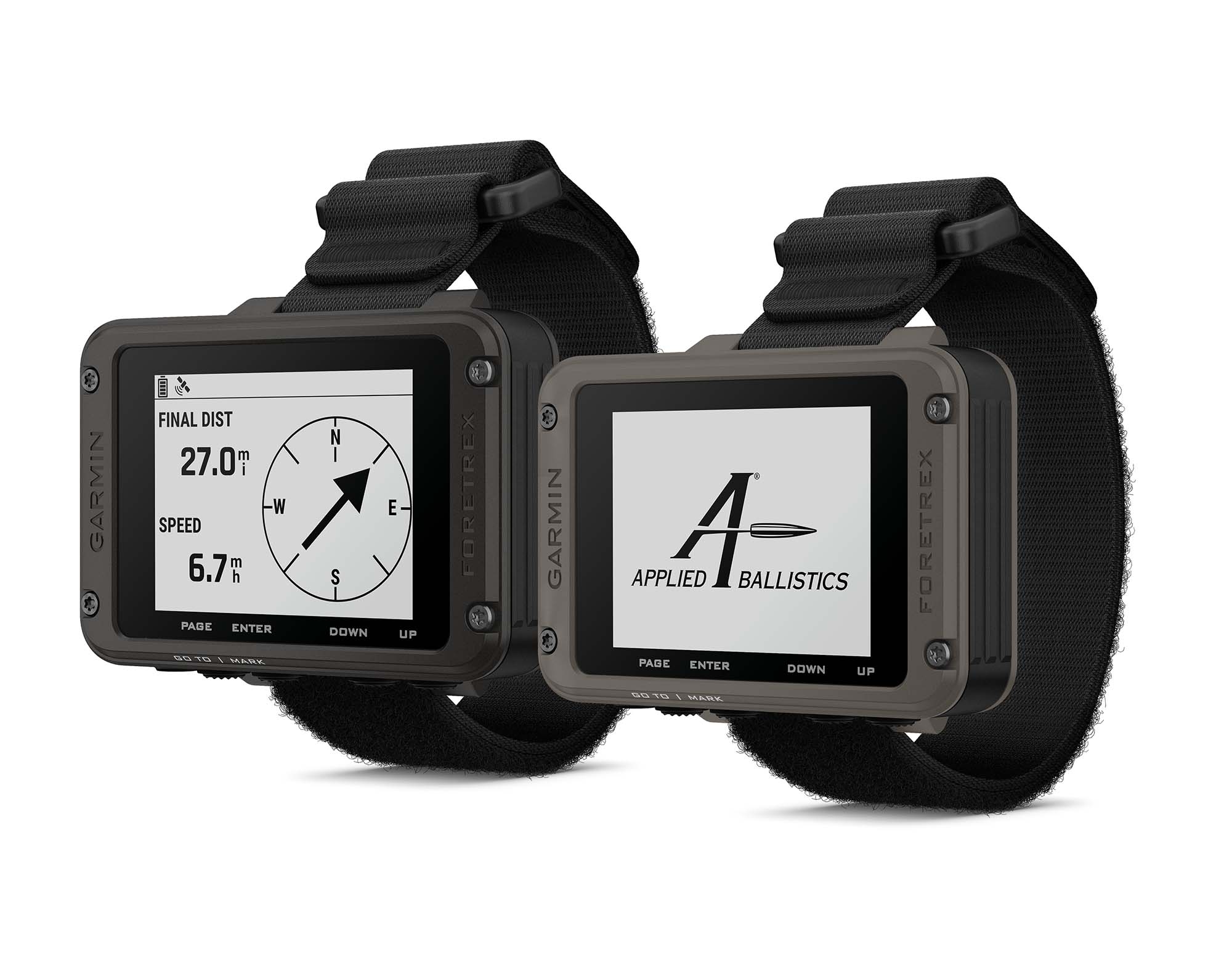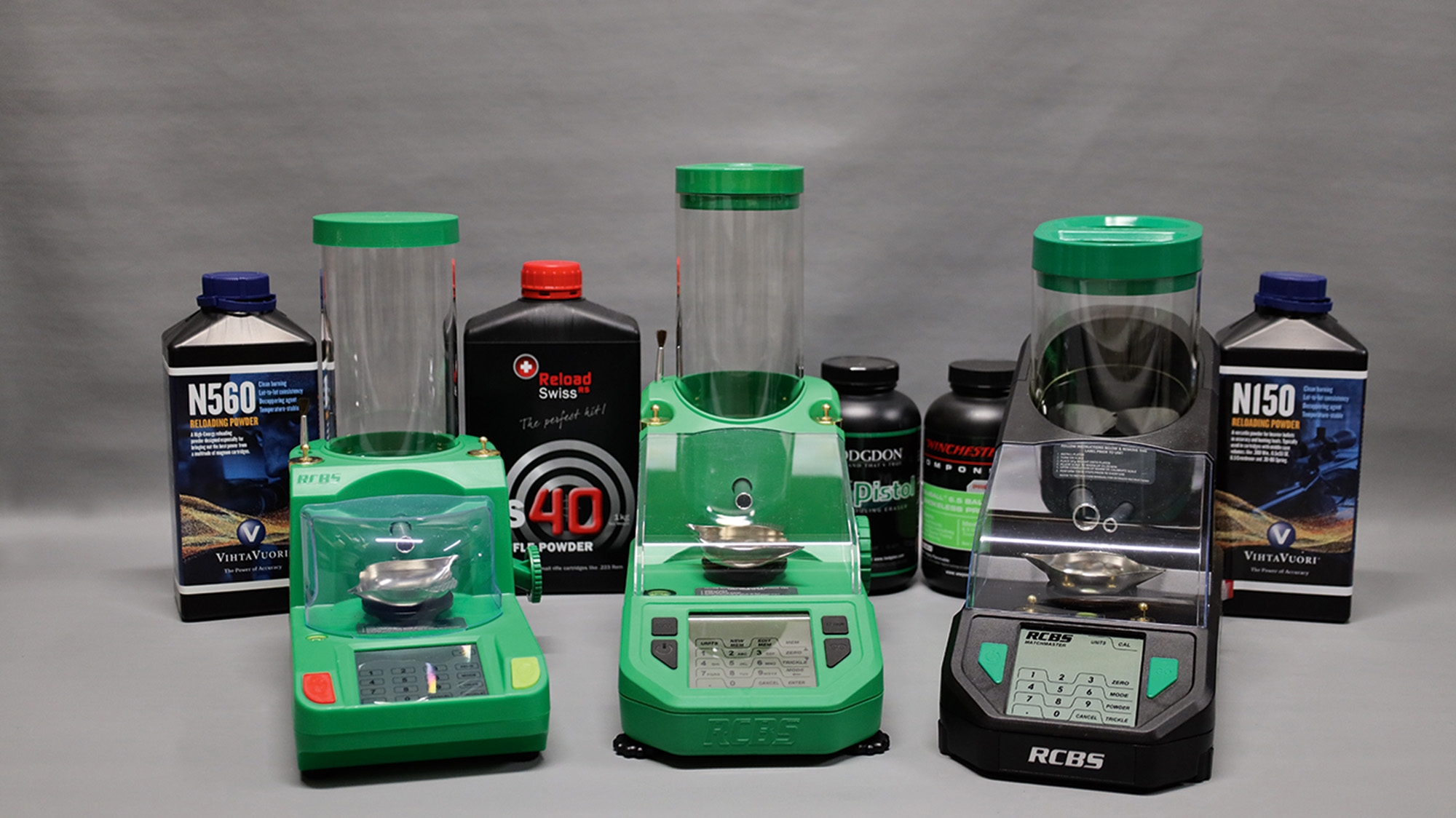Do you clean your car's exhaust? In the past, the question "Do you clean your silencers?" was usually met with this smug counter-questions instead of an answer. It seemed justified, since the interlocutors were usually members of the military and police forces, whose weapons are designed for functional reliability and durability. In the case of steel, Inconel, titanium and similar constructions, dirt build-up does lead to a long-term loss of performance in terms of sound reduction, but corrosion is not usually an issue, and if it is, the reduction in durability is not noticeable or relevant. The situation is different, however, with aluminum alloy silencers, which are now also widely used by hunters where allowed by law.
Solutions such as Guntec silencer cleaner from Liqui Moly counteract corrosion in aluminum mufflers
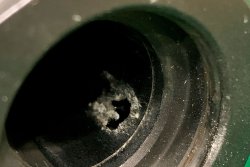
For some years now, as already mentioned, hunters have also been among the users of silencers. This group predominantly prefers not the heavy "workhorses" but filigree aluminum models optimized for suppression performance and weight reduction. Without or with the wrong care, there is then a good chance that the exhaust comparison will unintentionally apply: within a few years, there will be holes. Read correctly, the aluminum of the suppressor does not show any unsightly rust spots as known from cars or firearms, but it can still corrode. The reason for this is the unburnt powder residue that are deposited inside. These are hygroscopic, i.e. they attract water and thus form an acidic compound. Despite anodizing, aluminum does not resist this process for long; the anodized layer is too thin for this. As a result, corrosion begins and, in the worst case, destroys the silencer. By the way, this problem affects all manufacturers of aluminum silencers. In addition to careful drying after shooting, timely cleaning of the silencer is a remedy.
Owners of detachable silencers naturally have an easier time with cleaning. Residues can usually be easily removed after soaking in oil. With non-detachable silencers, on the other hand, the whole process is much more complicated – until now, an ultrasonic bath was usually the only way to remove the residues. With their professional silencer cleaning solutions, the manufacturers Ballistol, Fluna Tec, Liqui Moly and SchleTek, for example, which are well-known for their gun care products, now promise a remedy even without expensive equipment. We wanted to know how well this worked in contrast to the traditional method, and so our trials began full of excitement and expectation.
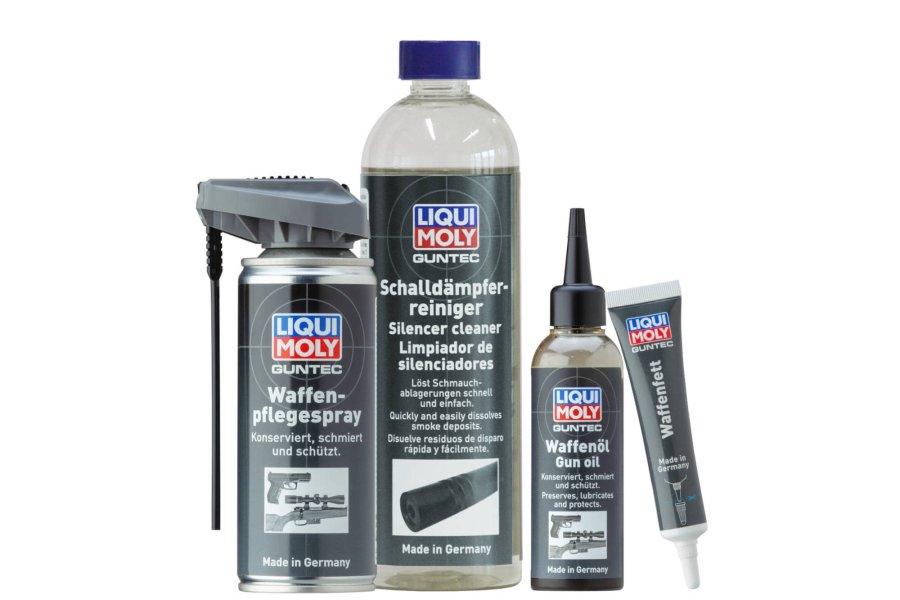
Challenge: 5 silencer cleaners against 5 A-Tec silencers with residues from a total of 5,000 shots with a Glock 44
If you are now wondering why we used a handgun silencer, and in the .22 LR rimfire caliber at that, the explanation is quite simple. In order to clean something, it must first be dirty, really dirty. In our test, each suppressor had been fired with a total of 1,000 rounds. The cost, as well as the organizational effort, to procure this amount of cartridges in a centerfire caliber would have been out of proportion to the desired result. In addition, the .22 LR rimfire cartridges, especially with greased lead bullets, are known to leave a lot of residue in guns and silencers during continuous use. And this is ultimately about the cleaning effect of our test candidates. Therefore, in combination with a Glock G44, we fired five A-Tec CMM4s with 1,000 rounds each in .22 LR, an even mix of standard and HV ammunition.
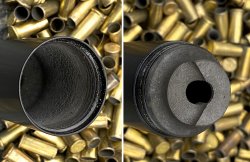
Shooting took place in 10 quick series of 100 shots each. A total of 10 Glock G44 magazines were loaded with 10 rounds each, so that 100 cartridges were fired in less than two minutes. The silencer was then allowed to cool down until the next round. After 1,000 shots, the picture was the same for all the silencers: each had gained around 6 grams in weight. Although smaller amounts of porous powder residue fell out of all the test silencers simply by shaking them, a look inside the silencers revealed the same picture everywhere: a continuous, strongly burnt fouling, most pronounced in the first chamber and on the first orifice plate. Although the CMM4 is a detachable silencer, we only unscrewed our test specimens to check and photograph them, and then reassembled them without any cleaning. In this respect, the cleaning results are quite transferable to non-detachable mufflers with similar build.
We started with the Fluna Tec silencer cleaning set. In addition to the 250-ml cleaning agent concentrate (diluted with water it makes 1,000 ml of cleaner) Fluna Tec also supplies a microfiber cloth. Both are in a box which, according to the manufacturer, also serves as a cleaning container in which the complete muffler is to be covered with the solution. All other manufacturers recommend closing the muffler on one side and then filling it with cleaner. In the opinion of the all4hunters.com team, this is also the better solution, since dirt present on the outside can usually be removed more easily with rags and a little oil. But now to the result: after 2 hours of soaking, we removed the silencer, let it drain partially, shook it and rinsed it with warm water until only clear water came out. Then it went to the oven to dry. After opening, the silencer showed that the dirt had taken on a slightly lighter shade of gray, but was still firmly in place. This did not really change after the second run (with the recommended soaking time of 12 hours for particularly critical soiling). With the second run, the advantage of the concentrate over the ready-to-use cleaners was also gone.
Now the standard cleaner from SchleTek was tested. To do this, we sealed the silencer on one side with one of the enclosed plugs and filled it with the liquid. Standard Cleaner achieved – also after a 12-hour extra run – the same result as the agent before. It, too, was unable to loosen the fouling. The more aggressive and also more expensive SchleTek Suppressor Cleaner Evolution was different. After the maximum recommended exposure time of 120 minutes, it had largely dissolved the somewhat thinner deposits. After disassembly, the original surface presented itself in many cases. The cleaners from Ballistol and from the Liqui Moly Guntec gun care series both showed during the first rinse that these agents can actually dissolve the crud. After a total of around eight hours, both had completely dissolved even the thinner deposits.
Conclusion to our silencer cleaner test and a practical tip
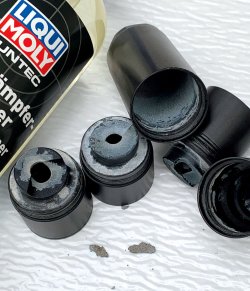
Due to their heavy contamination, the silencers we prepared proved to be a really tough nut to crack for all the cleaners in the test. 1,000-shot cleaning intervals are obviously far too long, at least for the .22 LR “mucky pup". None of the agents managed to completely remove the residues in the silencer within the recommended exposure time; the standard product from SchleTek and the Fluna Tec cleaner were unable to achieve any discernible cleaning success in our test given the high degree of contamination. The best cleaning performance was achieved by the standard cleaners from Liqui Moly, Ballistol and the SchleTek Evolution. These agents actually infiltrated the powder residue and thus whole chunks came off the inside of the silencer. However, it makes sense to prevent such heavy contamination from occurring in the first place and to clean each silencer much sooner. The degree of fouling in a silencer used for hunting depends on many factors such as barrel length, ammunition quality and silencer design. Therefore, it is difficult to give a general formula for cleaning intervals. But a regular cleaning already after 250 to 350 rounds with a good silencer cleaner is (besides the obligatory drying of the silencer after each shooting) a good investment, which increases the life of your silencer in the long run and is also cheaper in the long run than a frequent new purchase. A good silencer cleaner is a good purchase in any case!
For more information on the Glock G44 pistol used in the test and other Glock firearms please visit the Glock website.
You can find out more about the silencer cleaner from Liqui Moly Guntec gun care series here in the manufacturer's online store.



